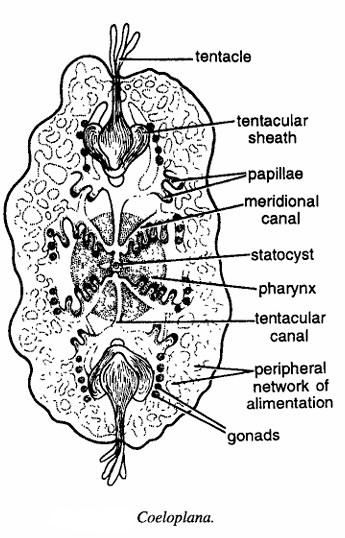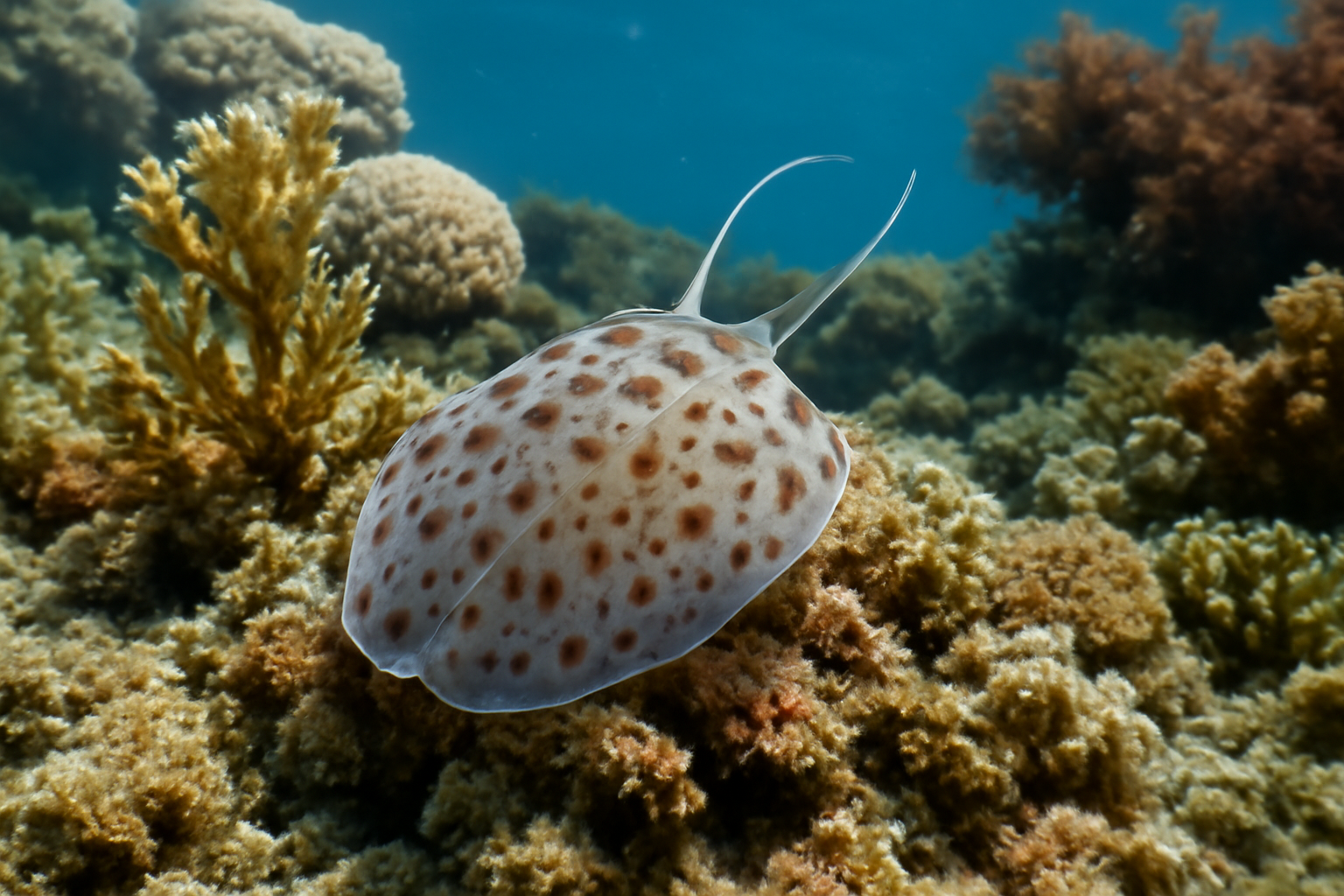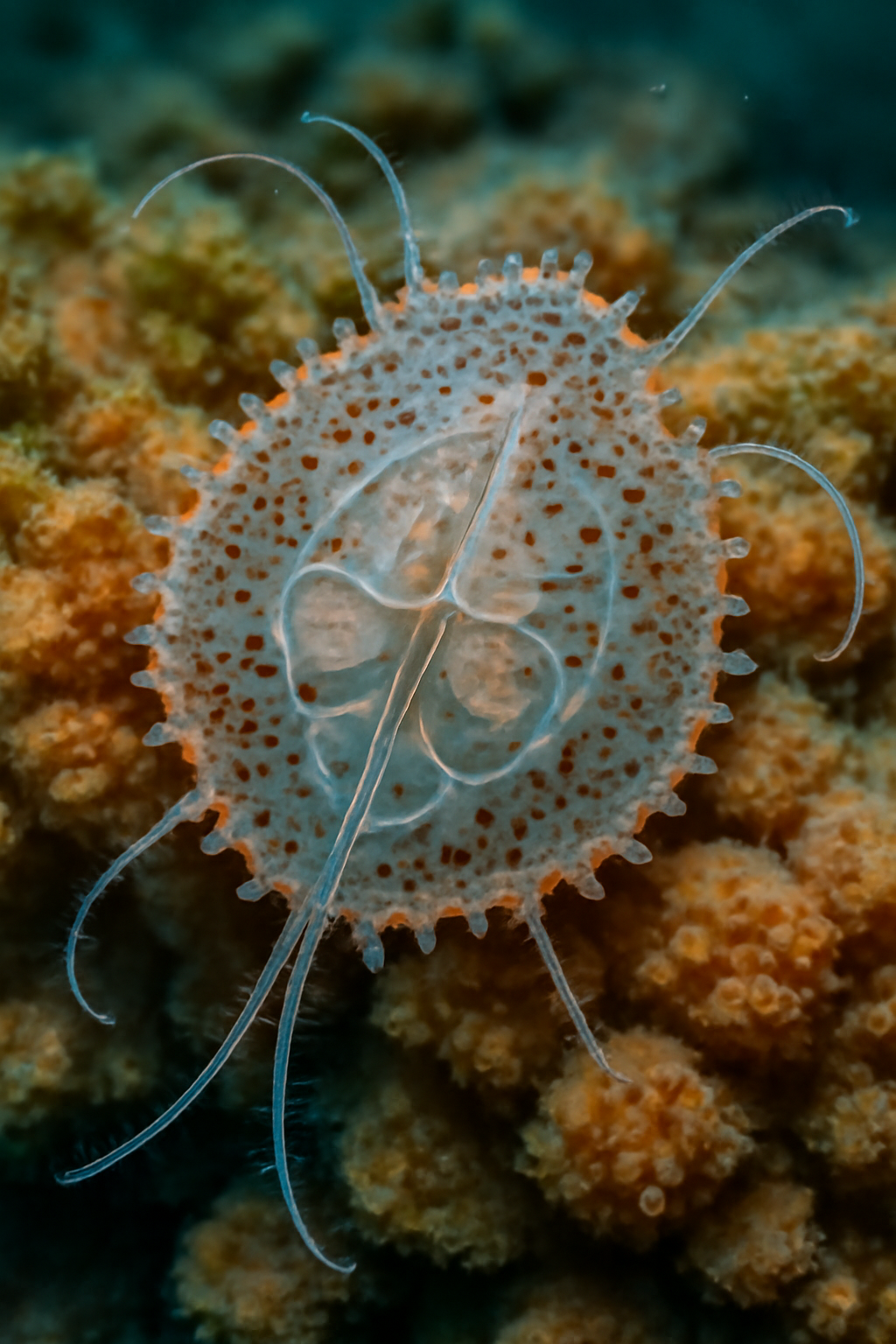Exploring Coeloplana: Classification, Habitat, Morphology, and Ecological Role
Classification of Coeloplana
- Kingdom: Animalia — Complex multicellular organisms
- Phylum: Ctenophora — Marine invertebrates known for their eight rows of ciliary combs for locomotion
- Class: Tentaculata — Possess retractile tentacles with adhesive cells called colloblasts
- Order: Platyctenida — Benthic ctenophores flattened for crawling on surfaces
- Family: Coeloplanidae — Flattened, creeping ctenophores often associated with other marine invertebrates
- Genus: Coeloplana — Exotic benthic ctenophores distinguished by flattened body and crawling habit

Habitat and Living Conditions
Coeloplana species thrive on benthic surfaces across warm oceans, predominantly on coral reefs and seagrass beds where they exhibit a creeping, crawling locomotion unlike their planktonic relatives. These organisms have evolved flattened bodies enabling tight adhesion to substrates such as algae, sponges, and soft corals in shallow coastal environments.
The benthic lifestyle of Coeloplana allows it to avoid strong water currents, feeding opportunistically on microscopic particles and symbiotically associating with host organisms. Their natural habitats often possess rich biodiversity, aiding Coeloplana’s role as both predator and prey in reef ecosystems.
Global Distribution
Coeloplana species are distributed chiefly in tropical and subtropical Indo-Pacific waters, including the Great Barrier Reef, Red Sea, and around island arcs of Southeast Asia. Their presence in coastal benthic zones correlates with coral reef health, often serving as an indicator species for stable ecosystems.
Although predominantly Indo-Pacific, some Coeloplana species have been recorded in other tropical marine regions, highlighting their potential for wider ecological influence.

General characters
- Flat oval elongated animal in tentacular plan and measuring approximately 60 mm in length.
- It is transparent or coloured on the aboral surface in various shades like olive and reddish.
- It creeps on some alcyonarians as an ectocommensal. There is a tentacle in each notch. Tentacle arises from tentacle base.
- Tentacle is enclosed in a tentacular sheath. Statocyst is mid-dorsally placed. Anteriorly tentacle shows branching.
- Peripheral network of alimentary canal are clearly seen. Comb rows are absent. The diagnostic feature of the animal is the presence of 12 to 60 erectile papillae depending on species. Tentacular canals and meridional canals are present in the middle. Gonads present posteriorly.
- Gonads (testes and ovary) are found in the wall of 8 meridional canals.
- The egg gives rise to typical ctenophore cydippid larva that develops into the adult. It reproduces sexually.
- Coeloplana exhibits a distinctly flattened and oval-shaped body, commonly measuring a few centimeters in length.
- The body lacks the characteristic ctenophore swimming comb rows; instead, it uses cilia on its ventral surface for creeping movements.
- Possesses paired tentacles equipped with colloblasts for adhesive prey capture and locomotion assistance.
- Absence of a medusa-like stage and a highly reduced internal cavity make Coeloplana unique among ctenophores.
- Exhibits striking translucent or spotted coloration patterns providing camouflage on host surfaces.
- The oral and aboral surfaces bear multiple lobes aiding in maneuvering over substrates.
Functional Adaptations and Special Traits
- The flattened body and creeping locomotion enable Coeloplana to dwell on uneven, often vertical surfaces, negotiating complex coral structures.
- Colloblast cells provide an adhesive mechanism for effective prey capture and subtle anchorage on hosts.
- Some species display facultative symbiotic relationships, enhancing their survival and feeding efficiency.
- Exceptional camouflage adaptations reduce predation risk by blending seamlessly with the host organism’s colors.
- Sensory structures detect chemical cues and vibrations facilitating navigation and prey location.
Identification Guide
Field identification hinges on observing Coeloplana’s unique flattened, crawling morphology coupled with its habitat of attachment to corals or algae. Microscopic examination reveals the specialized colloblast-equipped tentacles and absence of swimming lobes typical of other ctenophores.
Their distinctive locomotion and often translucent or spotted coloration help distinguish them from other benthic organisms.

Ecological Significance and Behavior
They serves vital ecological functions as a micro-predator of small planktonic and benthic organisms, influencing nutrient cycles and supporting coral reef food webs. Their success on coral hosts links directly to reef health, whereby declines in Coeloplana populations may signal environmental stress.
Behaviorally, they exhibit slow, deliberate crawling, often retreating rapidly when disturbed. They contribute to controlling microfaunal populations and serve as prey for small fish and invertebrates.
Human Interactions and Research Applications
While not harmful to humans, Coeloplana represents an intriguing subject in marine biology, particularly for understanding locomotion without swimming and the evolution of benthic lifestyles in ctenophores.
Their adhesive cell mechanisms inspire biomimetic research in adhesives and surface interactions, and their symbiotic relationships provide insights into marine mutualisms.
Conservation and Future Study Prospects
Conservation efforts seek to preserve coral reef habitats essential for Coeloplana’s survival. Ongoing research aims at elucidating their role in reef ecosystem dynamics and potential sensitivity to ocean acidification and warming.
The relatively understudied nature of Coeloplana opens opportunities for discovering new species, documenting behavioral ecology, and advancing marine biodiversity understanding.
References
- Marine Species Identification Portal: Coeloplana
https://species-identification.org/species.php?species_group=ctenophora&id=12 - Encyclopedia of Life (EOL) – Coeloplana Overview
https://eol.org/pages/34389 - WoRMS – World Register of Marine Species: Coeloplana
http://www.marinespecies.org/aphia.php?p=taxdetails&id=264965 - Barnes, R. D. (1982). Invertebrate Zoology. Holt-Saunders International Editions.
- Marine Biodiversity of the Indo-Pacific Region – Coeloplana and Symbiosis Research Papers
